|
|
Post by sheshki on Dec 31, 2012 17:50:46 GMT -5
Here is the other side of cup 2 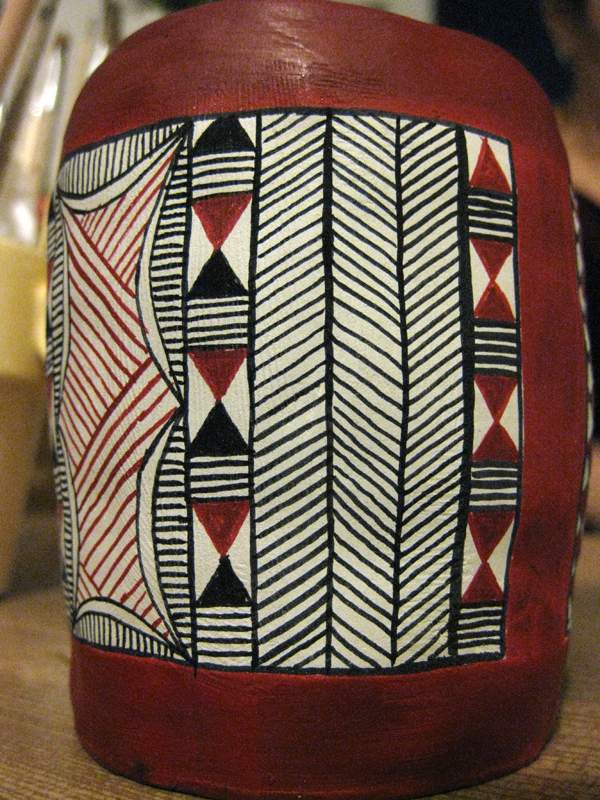 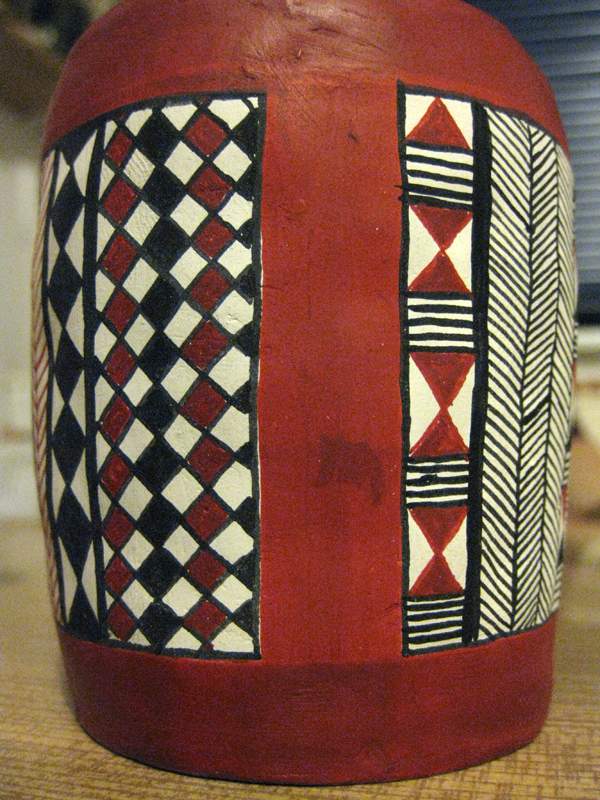 |
|
Šarraku
dubsartur (junior scribe)
 Ṣīr ilī
Ṣīr ilī
Posts: 9
|
Post by Šarraku on Feb 2, 2013 16:27:01 GMT -5
Beautiful work! I did a crash course on cuneiform using Daniel Snell's workbook; I managed to get 98/110 on the final test, but I already feel my knowledge slipping, especially since I haven't been practicing cuneiform as often recently, focusing more on Akkadian grammar. A little while ago I took out a red marker and doodled a basic Akkadian sentence. 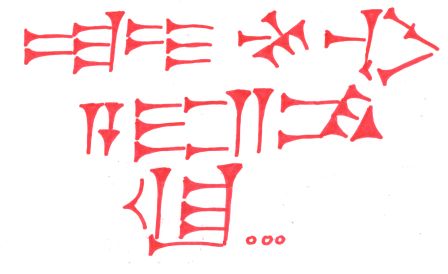 Should read :
ad-i mu-tim a-ra-am-ki
adi mūtim arâmki
"I (will) love you until death..."
... it's a in-joke between a friend and me.  |
|
|
|
Post by sheshki on Feb 3, 2013 12:19:47 GMT -5
Maybe this book is something for you? 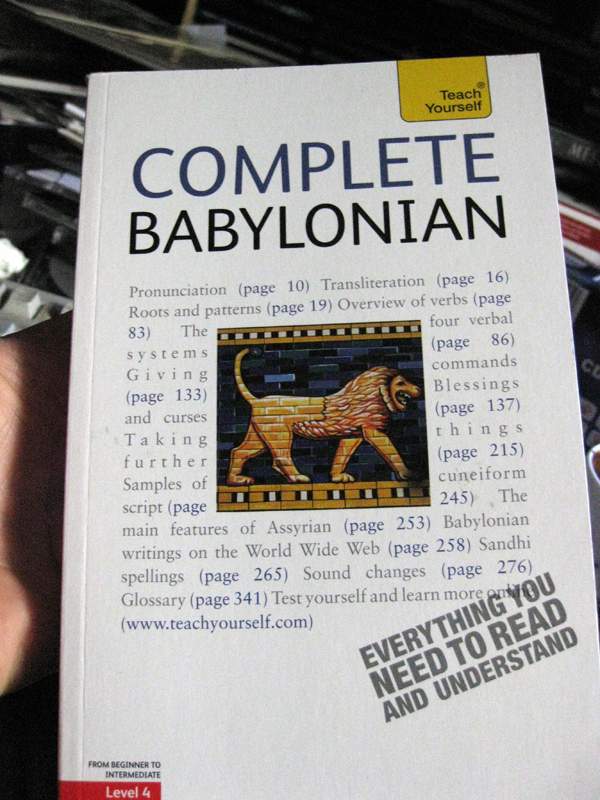 |
|
Šarraku
dubsartur (junior scribe)
 Ṣīr ilī
Ṣīr ilī
Posts: 9
|
Post by Šarraku on Feb 3, 2013 12:31:34 GMT -5
Yes, that book is a major help! I started with Caplice's book, but only got as far as the construct state before losing it. "Teach Yourself Complete Babylonian" is much more accessible for a beginner.
Out of curiosity, what types of pens do you use to hand-write in cuneiform?
|
|
|
|
Post by sheshki on Feb 3, 2013 13:59:34 GMT -5
I use some pigment liner, from 0.05 to 0.5 millimeter or a ballpoint pen. Pencils work too but can be a bit tiresome cuz you have to re-sharpen them.
|
|
|
|
Post by sheshki on Feb 19, 2013 11:50:54 GMT -5
My this winters "Sheshki in the snow" 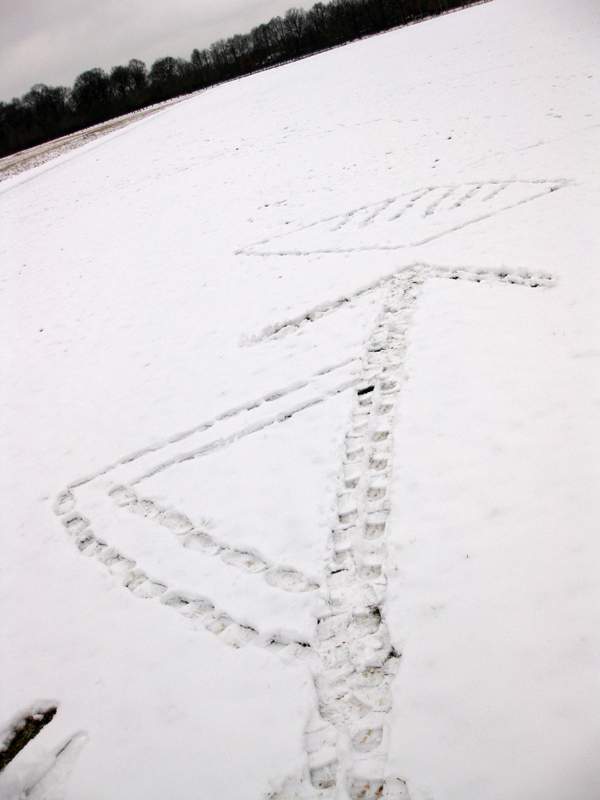 |
|
|
|
Post by sheshki on Mar 23, 2013 17:13:10 GMT -5
The Clay is mighty! And tonight i sculpted it into the shape of another beaker (sitting on the windowsill, drying, so no pictures so far). With the rest of the Clay i did a quick inscription on a tiny tablet. Here is the CDLI entry who inspired it: www.cdli.ucla.edu/P010044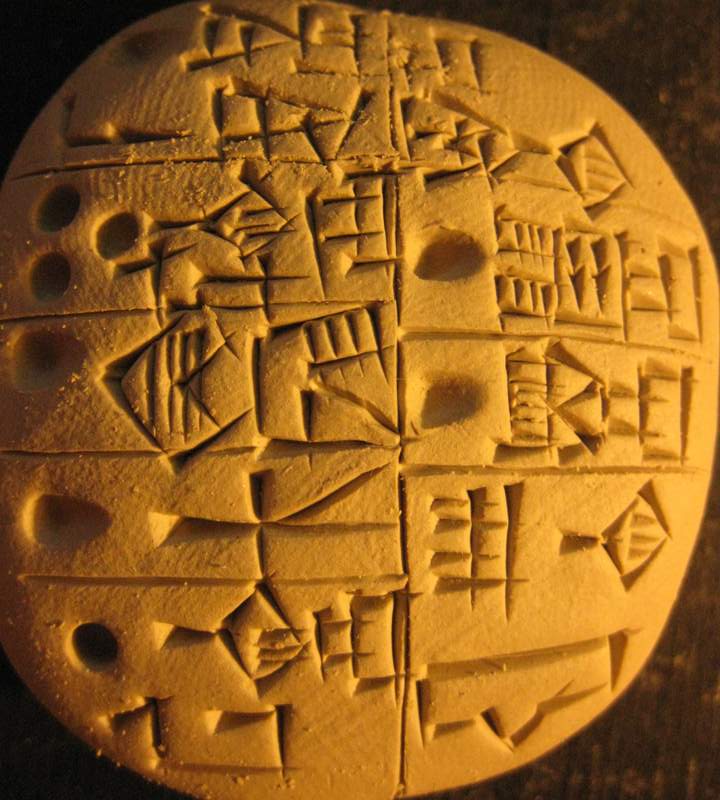 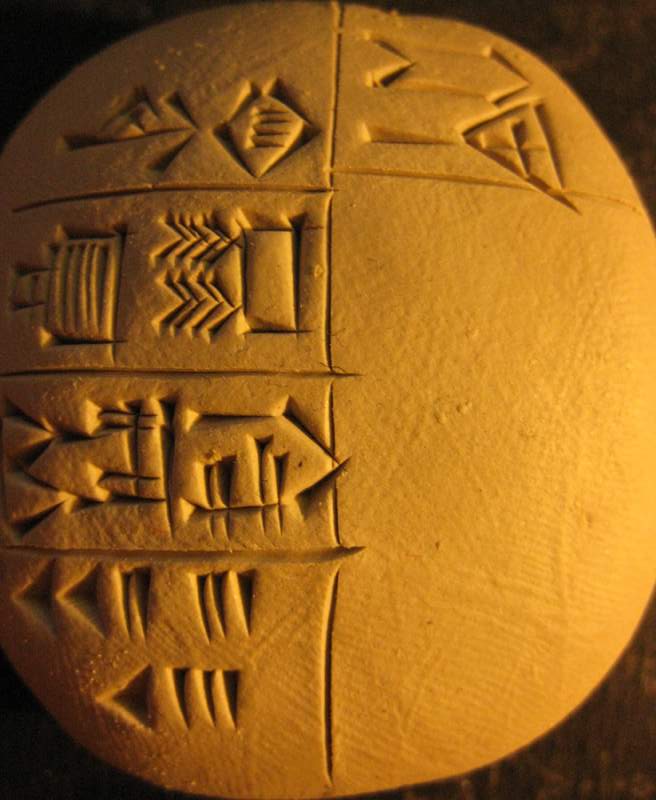 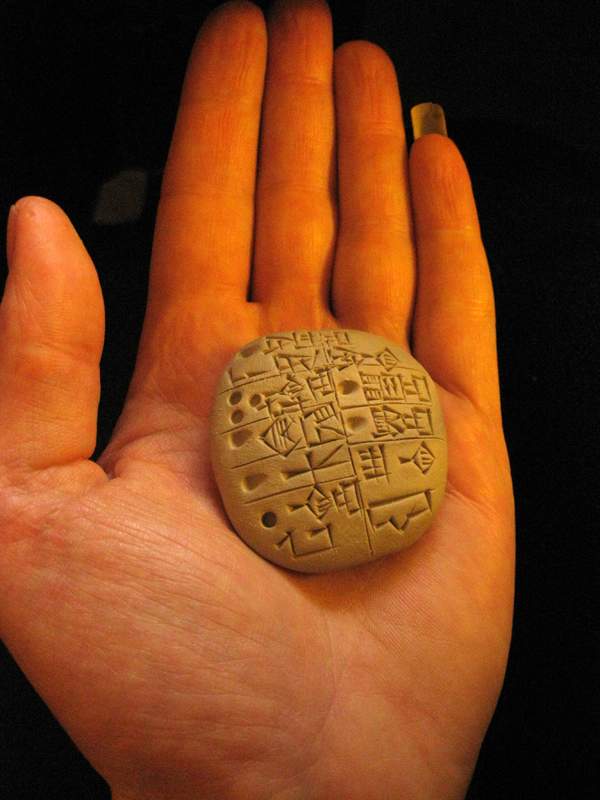 The Clay is mighty! |
|
|
|
Post by us4-he2-gal2 on Apr 6, 2013 18:28:31 GMT -5
Nice piece of work Sheshki  It's amazing how small this tablet is - that you can get such accuracy and straight dividing lines with such little room! I like the early number system used here, those big circular impressions or else the sort of bullet shape represent numbers. I notice this piece is from the EDIIIa period... I remember seeing in class this year pictures of very early clay tablets from Susa which are called "numerical tablets" and which come from the period directly predating writing - they use these same shapes to specific numbers of things (but not yet the things themselves). There was likely the same such "numerical tablets" from Uruk, but none have yet been found. The truth is that when Uruk was excavated, the excavators mainly had an eye for the architectural details of the temple areas, less focus was applied to things like pottery and tablets etc. So usually over the past half decade when you post your many strange ventures into the realm of Mesopotamia clay culture I have little in terms of an answer - but now, thanks to last semesters Ancient Near Eastern Materials class (in which the class was required to produce a clay pot during a visit to the kids room at the museum) , clay has spoken! 0_0 Obviously I decided to make mine less symmetrical and pleasing to the eye in order to ensure my clay art is distinct and unique and so forth. Anyway, its harder then it looks!!  Clearly I also painted it in pink and black so that it would look like crap. p.s. its a uhh. pot I think.
|
|
|
|
Post by sheshki on Apr 7, 2013 13:38:12 GMT -5
Hey Bill, your ...err...pot looks ...err...pink/blackish...maybe Clay only whispered to you  edit: the beaker i was talking about in my last post created cracks in the outer layer while drying and fixing these cracks only made it worse so i destroyed it. |
|
|
|
Post by sheshki on Apr 23, 2013 11:59:51 GMT -5
After a very long pause of practising i´m refreshing my neo-assyrien cuneiform since a week or two , and wee, they are still in my brain. Just wrote 180 signs from memory. 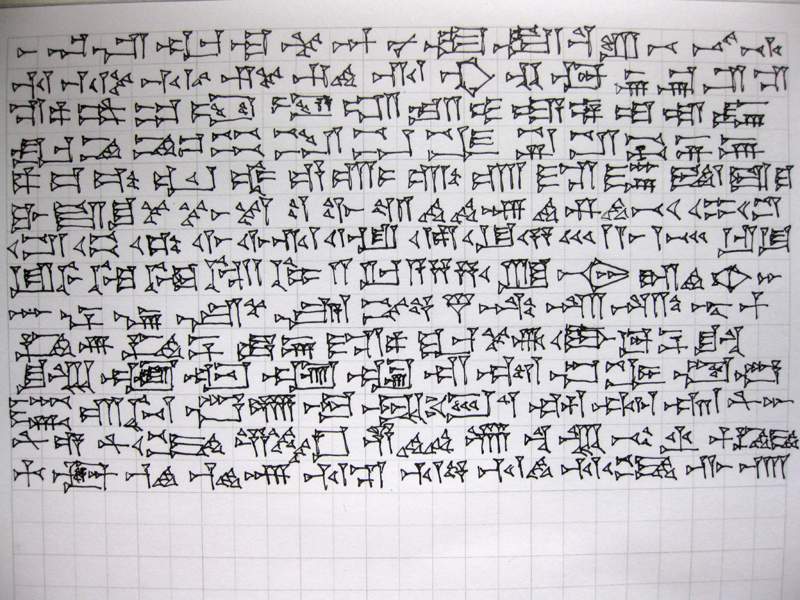 written with my 0.05mm pigment liner written with my 0.05mm pigment liner |
|
|
|
Post by us4-he2-gal2 on Apr 30, 2013 9:09:04 GMT -5
Clay is mighty! 0_0 So to appese clay (and Sheshki for that matter) I have bought some clay at the art store and set about making my first tablet. And, as if one needed anymore reason, its also a good method of retaining the cuneiform signs you've learned, as suggested by Eleanor Robson at the Knowledge and Power of the Assyrian Empire website  Obviously cuneiform tablets involve cuneiform, but it doesn't always occur to the modern learner that this is a practical or even possible way to go about it these days. 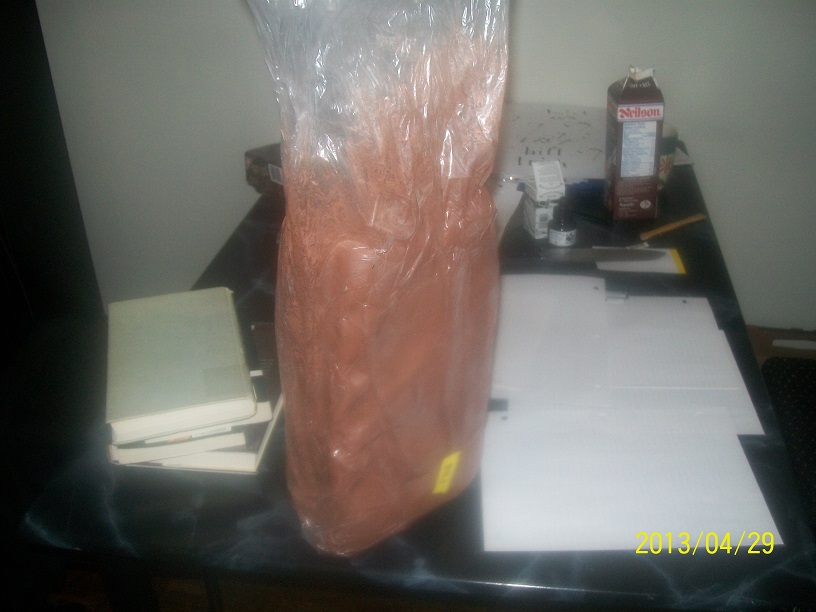 Here is the block of clay I bought from the art store. Its actually quite heavy 10 kgs so about 22 pounds. It was nice and moist though now a little less so, but still workable. I'm really not to fond of the chocolate cake color but it was that or a really dull grey. Which doesn't look tablet like. 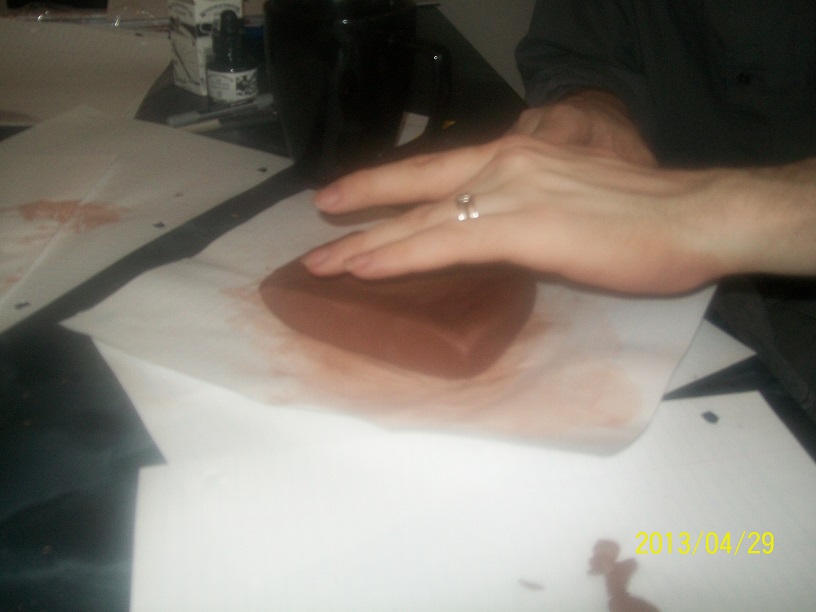 I probably made this two thick but it' s really just a practice piece, trying to figure out how to make wedges etc. 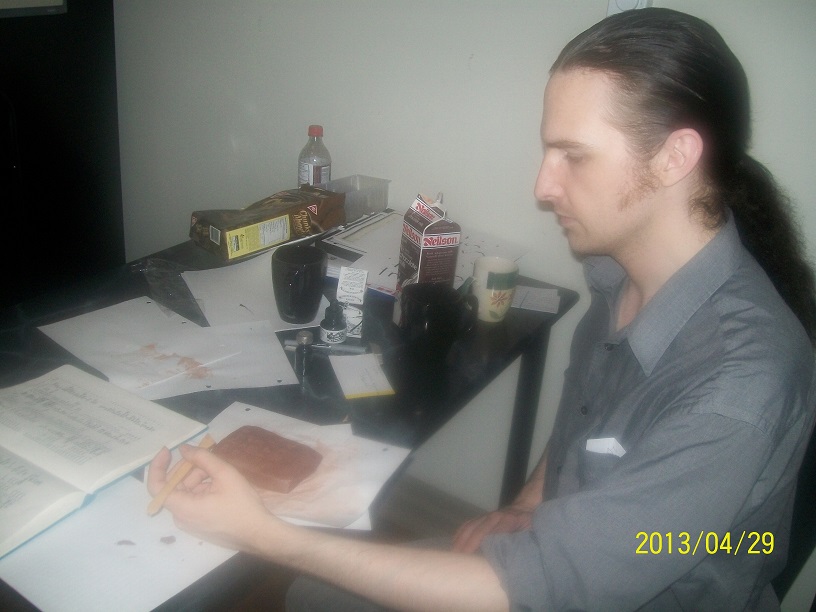 The ' stylus' I am using is a wooden tool from the art store meant for working clay - but it didn't have any shape close to a wedge so I have started whittling it a little with a knife. It still isn't quite right at the moment however. 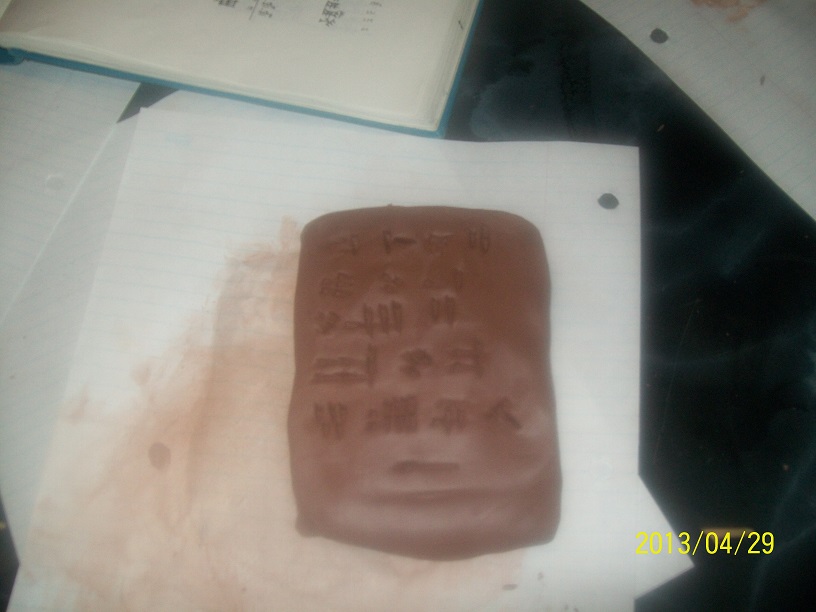 The result of my first try at a clay tablet 0_0 obviously a few tweaks are going to be necessary especially further shaping the stylus into a real wedge shape. But it was fun and a learning experience - lots to learn yet! 
|
|
|
|
Post by sheshki on Apr 30, 2013 12:15:55 GMT -5
Aaah, Clay is so proud of you, and i am too! Do you have a chinese food store nearby? They have the best writing tools there. But for reasons unknown to me they use them for eating.
Now i am motivated to make a tablet too.
The Clay is mighty!
|
|
|
|
Post by sheshki on Apr 30, 2013 14:29:56 GMT -5
Because Clay is mighty i have to post the tablet i just made. Inspired by this macehead: www.cdli.ucla.edu/P235672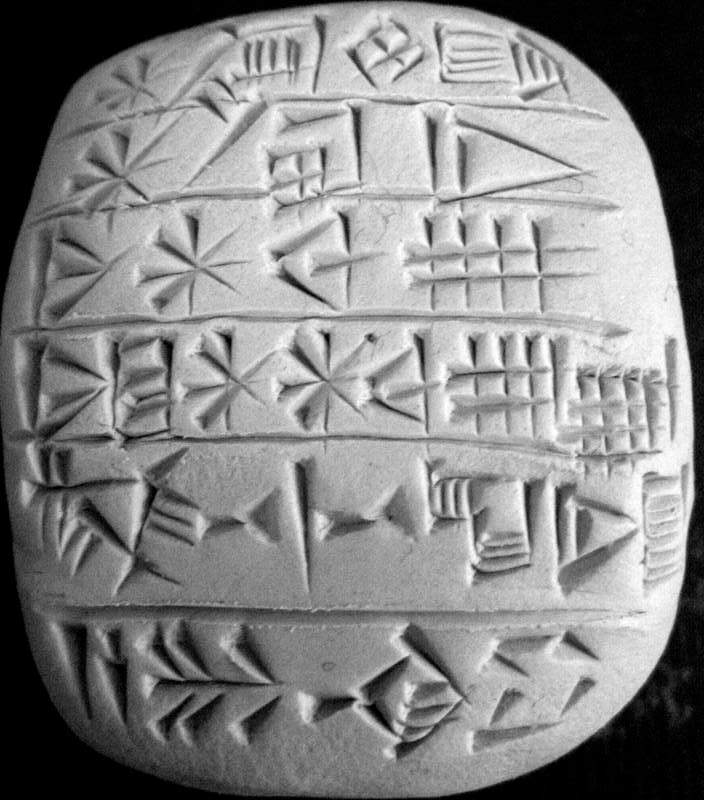 1. {d}szul-sza 3-ga To Šulšaga2. dingir-ra-ni her god,3. geme 2- {d}ba-ba 6 Geme-Baba,4. erisz-dingir {d}ba-ba 6-ke 4 the ereš-dingir priestess of the goddess Baba,5. nam-ti-la-ni-sze 3 for her life6. a mu-na-ru she dedicated it (this object).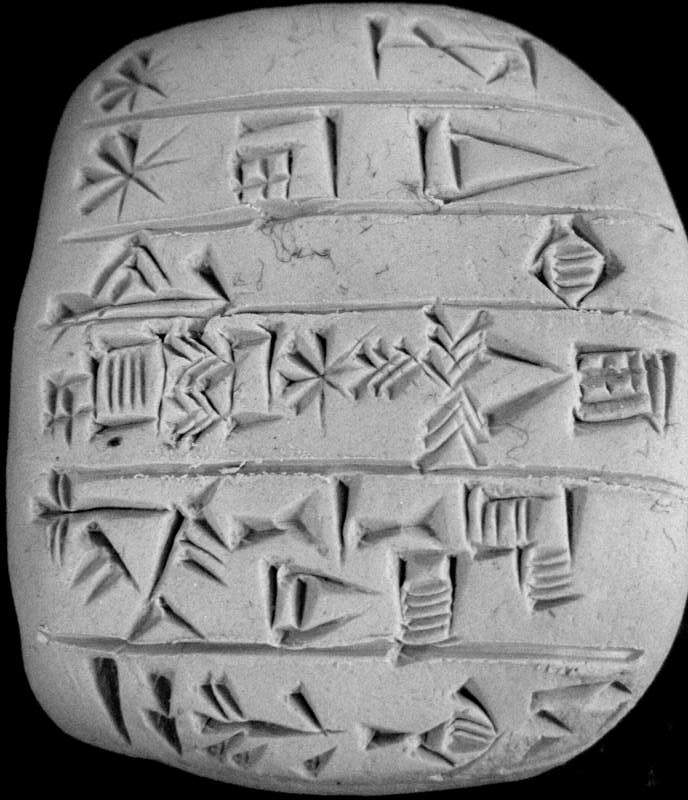 This side was inspired by, well, the other side  1. {d}inanna To Inanna2. dingir-ra-ni his goddess,3. szesz-ki Sheshki,4. dub-sar {d}nisaba-ke 4 the scribe of the goddess Nisaba,5. nam-ti-la-ni-sze 3 for his life,6. a mu-na-ru he dedicated it (this object).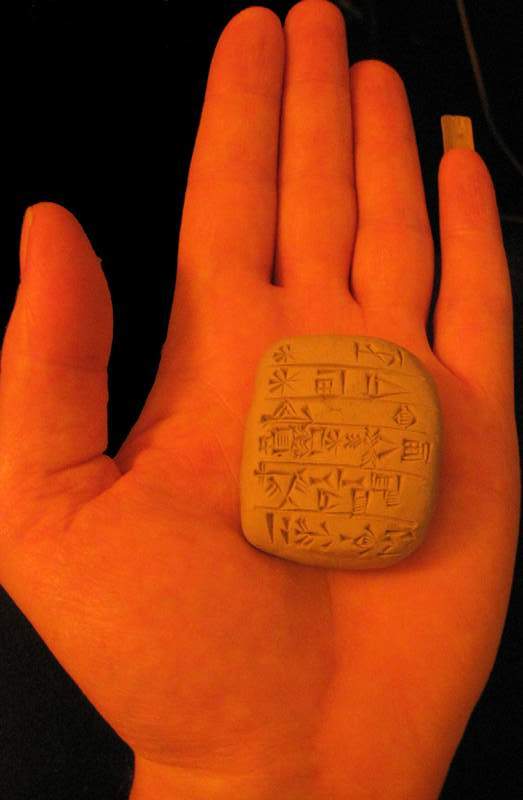 The Clay is mighty! |
|
|
|
Post by sheshki on May 8, 2013 13:35:52 GMT -5
Here is a picture of the tool i use, a modified chopstick, and , for comparison, an unmodified one. 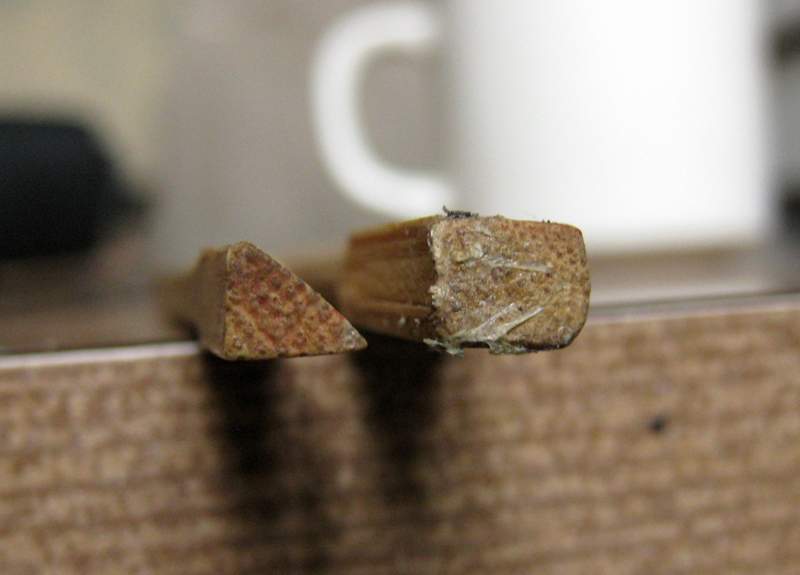 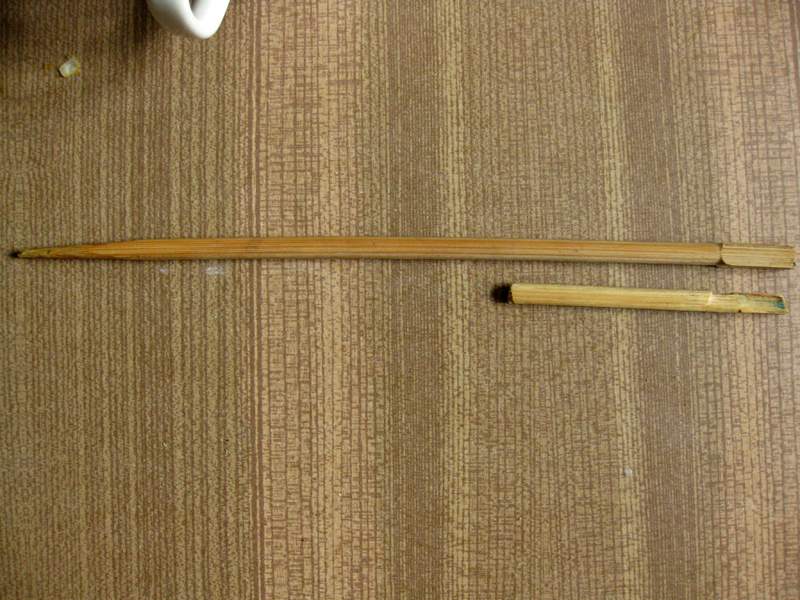 |
|
|
|
Post by enkur on May 17, 2013 13:38:15 GMT -5
Some stylus of mine. Attachments:
|
|
|
|
Post by enkur on May 17, 2013 13:40:45 GMT -5
Some inscriptions outdoors - with some natural clay. Attachments:
|
|
|
|
Post by enkur on May 17, 2013 13:45:55 GMT -5
And some indoors with some white clay for sculpturing. Attachments:
|
|
|
|
Post by sheshki on May 17, 2013 15:28:54 GMT -5
Your tablets look pretty good Enkur. What text did you choose?
|
|
|
|
Post by enkur on May 20, 2013 12:33:55 GMT -5
Sheshki,
I assume you've read my reply about the texts I used, so I'm deleting it for safety considerations. Usually I have fateful reasons when writing in cuneiform.
|
|
|
|
Post by us4-he2-gal2 on May 21, 2013 16:05:00 GMT -5
Excellent tablet making enkur  really are some beautiful wedges I especially like the white clay ones! Well, I will try and refine my techniques but am detained for a time until I can get some chopsticks and pratice carving the right shape |
|
|
|
Post by sheshki on May 21, 2013 17:27:25 GMT -5
Maybe i should make you some and send them over.  |
|
|
|
Post by sheshki on Jul 21, 2013 14:36:33 GMT -5
Today, during a bike trip break at lake Zwenkau, i discovered alot of clay in the water so i spontaneously made a tablet. 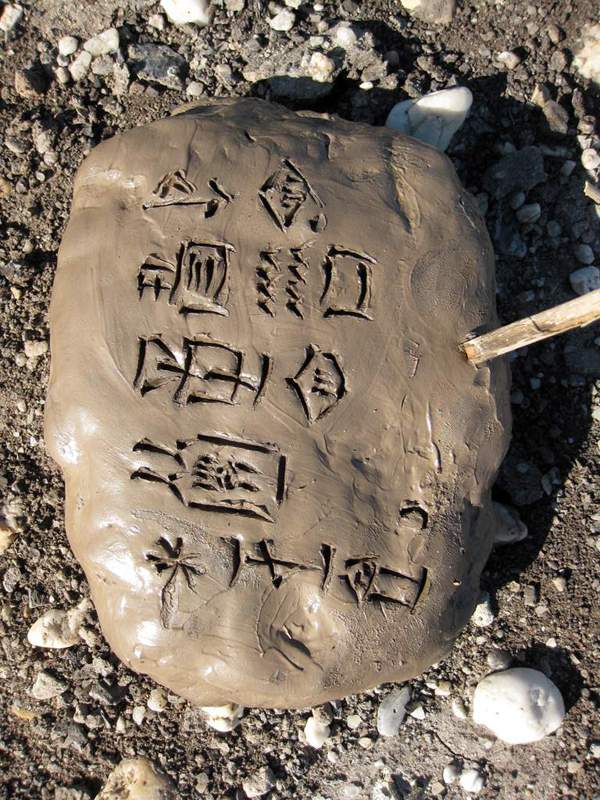 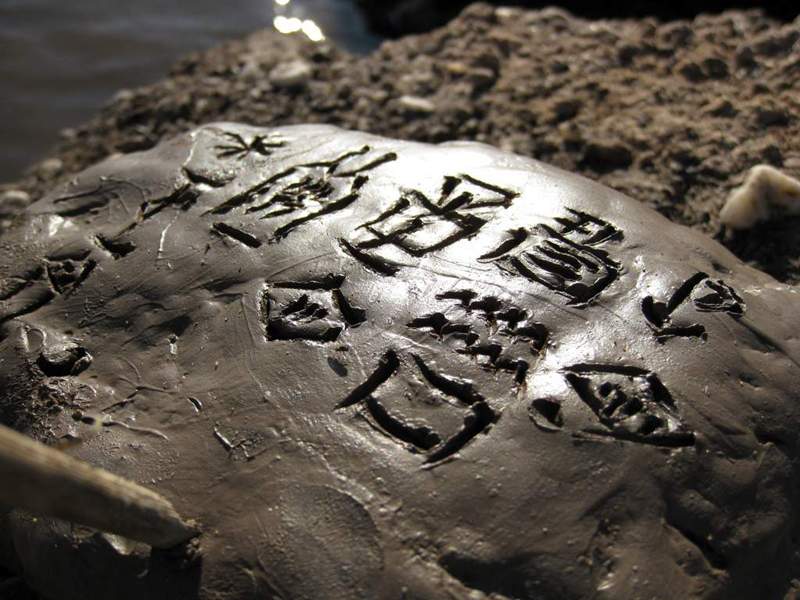 ...and an ashtray like vessel. 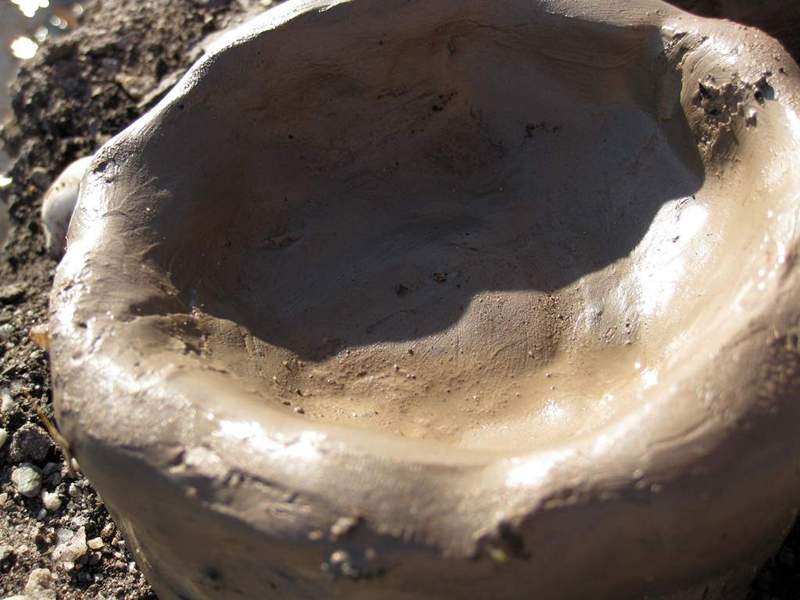 The CLAY is mighty! |
|
argileye
dubsartur (junior scribe)

Posts: 5
|
Post by argileye on Jul 24, 2013 13:02:59 GMT -5
First of all, I wanted to say that you have a great forum here and I that a lot of the active members are just amazing! And second, I have to warn you that this is a silly request and I would not be surprised if the topic will be moved or eventually, removed completely. So I apologise beforehand. I am a law student and I have been planning for a long time to get a cuneiform tattoo. It’s an extract from the Code of Hammurabi, more precisely, from the Prologue: mīšaram ina mātim ana šupîm – to cause justice to prevail in the land, raggam u ṣēnam ana hulluqim – to destroy the wicked and the evil, dannum enšam ana lā habālim – to prevent the strong from oppressing the weak. A friend has helped me identify the exact fragment in cuneiform script from a translation by Robert Francis Harper. I am attaching this original file to this message, together with the corresponding translation. Now my two requests: Could you confirm that this is indeed the aforementioned fragment? And, Could you please indicate the correct orientation of the text? I have no clue whatsoever if the columns and the figures are in correct order. Also, while in this particular translation, the columns appear horizontally, I realised that on the actual column, they are obviously vertical. I would immensely appreciate your help guys. Also, it would help if you could point out a higher resolution translation of the text so I can get a better impression of the figures. I thank you in advance!  Attachments:
|
|
|
|
Post by sheshki on Jul 24, 2013 13:50:48 GMT -5
Hello argileye, welcome on board. I congratulate you on the idea of getting cuneiform inked. It´s the best kind of tattoo  I think i have a very high resolution image of the text somewhere. Have to search tho. And i have to find a text for my next ink. Motivated now  |
|
|
|
Post by blocksterz on Jul 24, 2013 15:07:49 GMT -5
happy to see you people interested in the 1st alphabet in history of mankind its the ugarit alphabet and ugarit kingdom is located 10 KM north of latakia city on the Syrian coast witch is my home town .. Ive visited ugarit many times its simply majestic and actually you can buy some genuine stuff if you know some one there ...( of course its illegal )
best words from what Ive read was a message from Baal it says:
message of the great Baal
words of the mighty hero
send war far from land
finish disputes in the country
let peace sneaks through the ground
and let friendship grows over the fields
|
|
|
|
Post by sheshki on Jul 24, 2013 15:14:03 GMT -5
Well, i found the hi-res pictures of the stele and i found the piece of text, but it does not look much clearer. Have to think about a solution  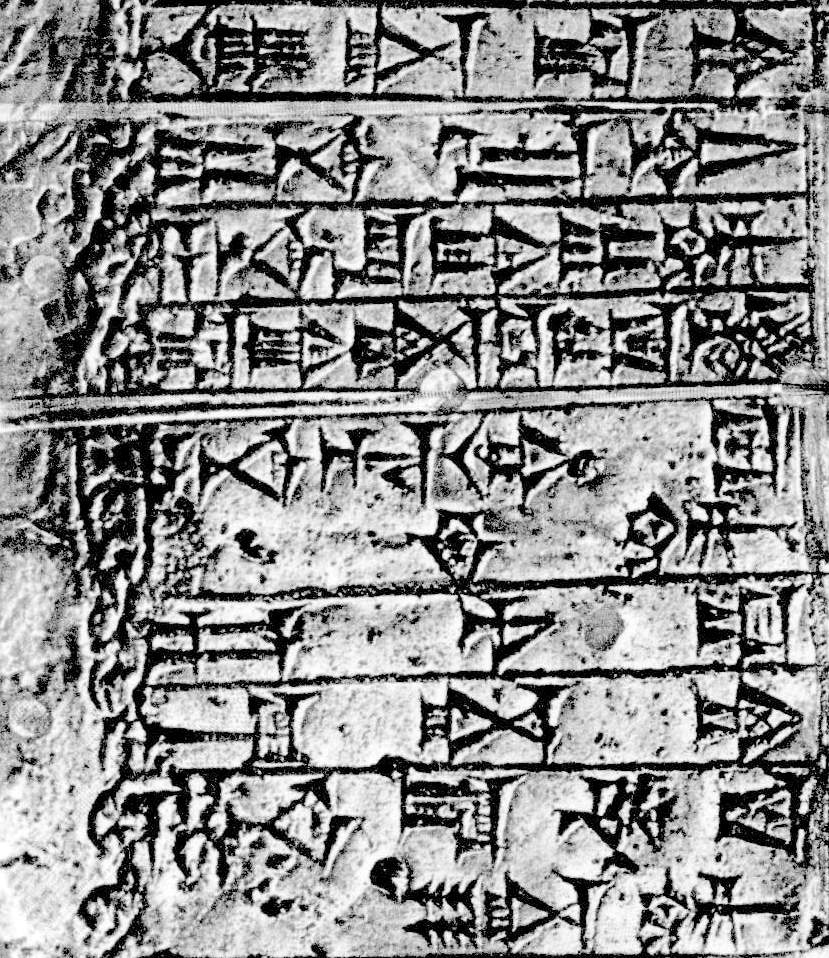 |
|
|
|
Post by sheshki on Jul 24, 2013 15:27:55 GMT -5
Hello blocksterz,
well we are more interested in sumerian/akkadian/hittite cuneiform.
And i don´t think anyone here is interested in buying illegally dug up stuff.
|
|
|
|
Post by blocksterz on Jul 24, 2013 15:31:50 GMT -5
hello sheshki ..well i think this is ugarit alphabet and no am not selling what so ever i was just tellin only am out of that part of the world long time anyway .. have a nice day
|
|
argileye
dubsartur (junior scribe)

Posts: 5
|
Post by argileye on Jul 24, 2013 17:13:23 GMT -5
Many thanks, sheshki. It is great to look at the actual photo of this fragment! But I am still very much confused about the orientation of the characters and the way they were originally written. All the books present the columns as horizontal but in the original photos of the Louvre block (see attached photo for reference), they are clearly vertical. So why were the printed versions rearranged horizontally? Was the way of reading the characters originally up to down and left to right? Or was it right to left?  Attachments:
|
|
|
|
Post by sheshki on Jul 24, 2013 18:09:32 GMT -5
Well, it is read from left to right. I think the reason why it was vertical on the stele itself is that the very old inscriptions of the Sumerians were written that way...at some point they turned their signs 90°. And it was very chique to write like the ancient Sumerians did  They also used a kinda archaic form of the signs for the inscription. This was very common for royal inscriptions. I hope i got that right. |
|